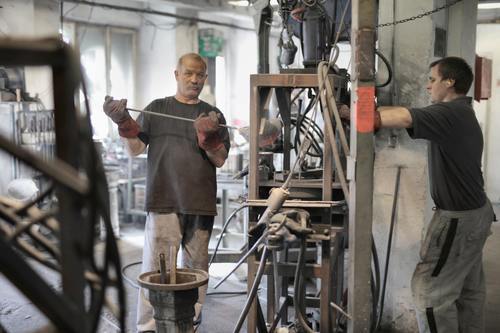Manufacturing Quality Electronic Machines
Electronic imaging is one field where errors are unacceptable. Manufacturing the cutting-edge technology for imaging machines requires a commitment to continuous improvement. Firms implement continuous improvement processes to allow employees to correct defects during manufacturing, resulting in a low number of variant issues on the line. For imaging, high-quality machines, produced under a continuous improvement manufacturing process, save lives. Here is a definition of continuous improvement and three ways in which the process is vital for manufacturing antarosmedical.com electronic imaging machines.

Continuous Improvement
The continuous improvement process focuses on incremental changes over time or a profound breakthrough, which increases the effectiveness of the manufacturing process. By incorporating feedback at each step in the process, a manufacturer is able to evolve incrementally in the way the manufacturing progresses. Self reflecting on the process every moment helps to eliminate problems and reduce waste. These changes lead to a near perfect production process, allowing the company to ship high-quality imaging machines to his client within budget.
Objective
All stakeholders must begin manufacturing the imaging machines with clear objectives. A manufacturing firm’s director will outline which areas on the plant floor will produce specific machine parts. The workers will collaborate by completing each part or combining parts, until the machine is completely assembled. Best and worst case scenarios are developed and a work plan is established, which will allow the team to meet the objectives of producing the number of units in a targeted time frame.
How well the actual manufacturing process aligns with the work plan depends on the problems a manufacturer encounters during the production process and how quickly the team remedies those challenges. For example, if a line on the plant for is producing one of the panels for the imaging unit, the plant worker(s) must bore every screw hole for each panel in the same place.
A worker who receives the panels to connect to the finished imaging machine realizes that a few of the holes are in the wrong place. He notifies the floor manager to stop production. By evaluating the cause of the problem, which may be a new worker on the line or a mechanical issue with the machine, the workers are able to correct the issue and begin production again. If caught quickly, these incremental changes prevent waste and improve production quality.
Communication
Communication is vital to continuous improvement. Workers must choose to collaborate effectively and honorably to meet task requirements. Breakdowns in communication may affect performance. For example, if the machine operator doesn’t understand the production manager’s instructions, he may not set up the machine correctly, causing issues with output and additional waste.
Quantification
For a manufacturing team to successfully fulfill an order to produce multiple electronic imaging units, it must have quantifiable results and proof of stable production processes. The team must take a realistic look at current resources, including manpower and raw materials to develop a realistic plan. Once the process begins, continuous improvement is the only way to ensure the manufacturing firm delivers on time and within budgetary restraints.


